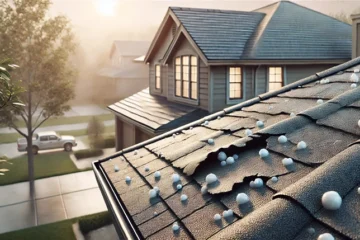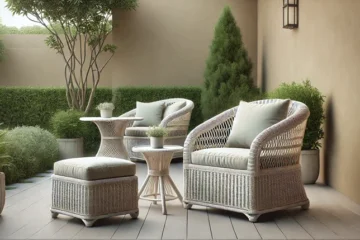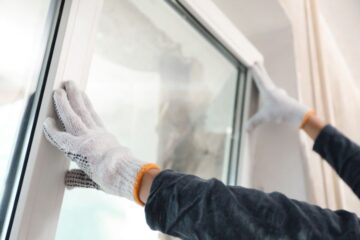Guide to Standing Seam Metal Roof Installation for Your Home

Before diving into the details of installation, it’s important to understand what a standing seam metal roof is. This type of roofing system is known for its sleek appearance and long-lasting durability. It consists of metal panels that run vertically along the roof’s surface, with raised seams that lock together, creating a water-tight seal. These roofs are commonly made of aluminum, steel, or copper and are widely regarded as a top choice for both residential and commercial buildings.
Why Choose a Standing Seam Metal Roof?
Standing seam metal roofs offer a range of benefits that make them a popular choice among homeowners. Here are a few reasons why you might want to consider this type of roof for your home:
- Durability: These roofs are highly resistant to weather conditions, including strong winds, hail, and heavy rain. They also have a lifespan of 50 years or more with proper maintenance.
- Energy Efficiency: Metal roofs reflect solar radiation, which helps reduce cooling costs in warmer climates.
- Low Maintenance: Once installed, standing seam metal roofs require minimal maintenance compared to other roofing materials.
- Sustainability: Most metal roofing materials are recyclable, making them an eco-friendly choice for environmentally-conscious homeowners.
What Materials Are Used for Standing Seam Metal Roofs?
When considering a standing seam metal roof installation, selecting the right materials is crucial. Metal roofing comes in various materials, each offering different levels of performance, appearance, and cost. Here are the most common materials used in standing seam metal roofs:
- Aluminum: Lightweight and resistant to corrosion, aluminum is a great option for homes in coastal areas. It’s durable and provides excellent protection against rust.
- Galvanized Steel: Galvanized steel is coated with zinc to prevent rust. It’s one of the most affordable options and offers a good balance between durability and cost.
- Copper: Copper is the premium choice for standing seam roofs. It develops a natural patina over time, giving it a unique and beautiful appearance. However, it comes at a higher cost compared to other materials.
Standing Seam Metal Roof Materials Comparison
| Material | Durability | Cost | Ideal For |
|---|---|---|---|
| Aluminum | High (resistant to corrosion) | Medium to High | Coastal areas or regions with high humidity |
| Galvanized Steel | Moderate (requires maintenance) | Affordable | General residential use, budget-friendly option |
| Copper | Very High (develops patina over time) | High | Luxury homes, architectural appeal |
What Are the Key Components of a Standing Seam Metal Roof?
Understanding the structure of a standing seam metal roof can help ensure a smooth installation process. Here are the key components involved in this type of roof system:
- Metal Panels: These form the primary surface of the roof and run vertically from the eaves to the ridge. The panels can vary in width depending on your design preferences.
- Seams: The raised seams are what give this roofing system its name. These seams are mechanically locked or snapped together to form a secure, weather-tight seal.
- Underlayment: An underlayment is placed beneath the metal panels to act as an additional layer of protection against moisture and leaks. It’s essential for preventing water damage to the roof deck.
- Fasteners: Hidden fasteners secure the metal panels to the roof deck, keeping the installation sleek and smooth without visible screws or bolts.
How to Prepare for Standing Seam Metal Roof Installation
Before starting the installation process, proper preparation is key to ensuring the longevity and performance of your standing seam metal roof. Here’s how to get ready:
- Inspect the Roof Deck: Make sure the roof deck is clean, dry, and structurally sound. Any damaged or rotting wood should be replaced before installation begins.
- Measure the Roof: Accurate measurements are essential for ordering the correct amount of materials. Be sure to measure the roof’s pitch, length, and width.
- Choose the Right Underlayment: Select a high-quality underlayment that suits your climate. For example, synthetic underlayment is highly recommended for areas prone to moisture.
- Prepare the Tools: Gather all the necessary tools and equipment, including a metal snip, drill, tape measure, and safety gear. Ensure you have access to a ladder and safety harnesses if needed.
What Are the Steps in Standing Seam Metal Roof Installation?
Now that you’re prepared, it’s time to go through the steps of installing your standing seam metal roof. Here’s a breakdown of the process:
Step 1: Install the Underlayment
Start by installing the underlayment. Roll out the material across the roof deck, ensuring it overlaps at least 6 inches on each side. Use nails or staples to secure it in place. Make sure the underlayment covers the entire roof deck for maximum protection.
Step 2: Install Drip Edge and Flashing
Next, install the drip edge along the eaves of the roof. This metal flashing directs water away from the roof’s edge, preventing damage to the underlying materials. Secure the drip edge with roofing nails, ensuring that it’s aligned with the edges of the roof.
Step 3: Attach the Metal Panels
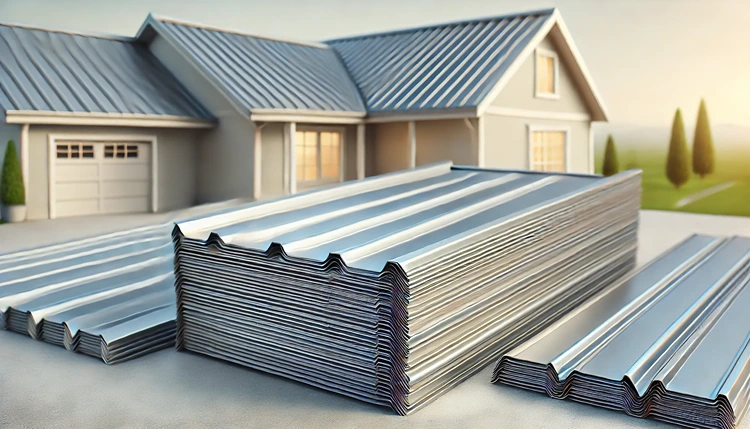
Start installing the metal panels at one edge of the roof, working your way across. Place the first panel at the eaves and secure it with hidden fasteners. Ensure that the raised seam aligns with the next panel, and lock the seams together securely. Continue this process until all panels are installed.
Step 4: Install Ridge Caps
Once the metal panels are installed, add ridge caps along the roof’s peak. Ridge caps cover the gap between the two sides of the roof, providing a seamless finish. Secure them in place with fasteners, making sure they are properly aligned.
How to Maintain Your Standing Seam Metal Roof
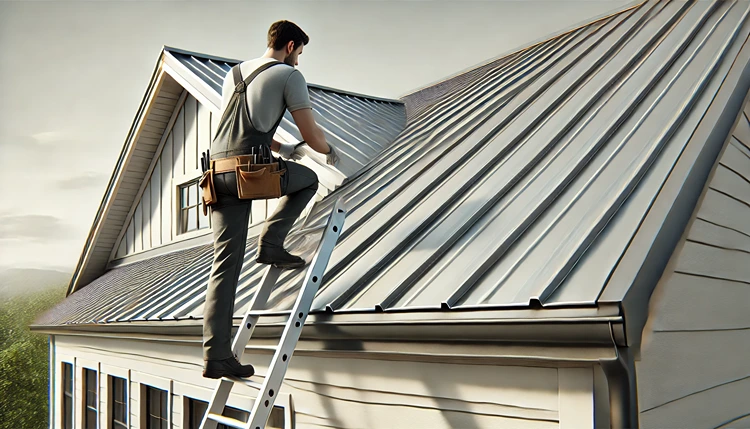
Proper maintenance will help extend the life of your standing seam metal roof. Here are some tips for keeping your roof in top shape:
- Clean the Roof Regularly: Remove debris like leaves, branches, and dirt that may accumulate on the roof surface.
- Check for Damage: Inspect the roof periodically for any signs of damage, such as loose seams or panels. Address issues promptly to avoid more significant problems.
- Prevent Rust: For steel roofs, keep an eye out for rust. If you notice any rust spots, treat them immediately to prevent further corrosion.
- Keep Gutters Clear: Ensure that gutters and downspouts are free of debris to allow water to flow off the roof efficiently.
Helpful Hint:
Consider hiring a professional for an annual inspection to ensure that all parts of your standing seam metal roof are functioning properly and to catch any potential issues early on.
What Are the Costs of Installing a Standing Seam Metal Roof?
The cost of installing a standing seam metal roof can vary based on several factors, including the size of the roof, the material used, and the complexity of the installation. On average, homeowners can expect to pay between $8,000 and $14,000 for a complete installation.
Stats:
According to recent data, the national average cost for installing a standing seam metal roof is around $11,500, with costs ranging from $800 to $1,200 per square (100 square feet).
The cost can also be affected by additional features such as insulation, roof pitch, and the need for special tools or equipment. It’s important to get several quotes from licensed contractors to find the best price for your project.
Common Issues During Standing Seam Metal Roof Installation
Even with careful planning, issues can arise during the installation of a standing seam metal roof. Knowing what to watch for will help you avoid costly mistakes and ensure a smooth process. Here are some common challenges you may encounter:
Incorrect Measurements
One of the most common problems is incorrect measurements. Since metal panels are cut to fit, even a slight miscalculation can lead to installation delays and wasted materials. Double-check all measurements before ordering materials, and consider consulting a professional for accurate measurements if you’re unsure.
Improper Panel Alignment
Ensuring that panels are properly aligned is critical to both the functionality and aesthetic of the roof. Misaligned panels can lead to water leakage, reduced energy efficiency, and an uneven appearance. Use chalk lines as a guide to keep everything straight during installation, and make sure the seams lock securely.
Weather Delays
Weather conditions can also interfere with installation. Metal expands and contracts with temperature changes, which can complicate the process. Install your standing seam metal roof during mild weather, and avoid working in extreme heat or cold to prevent material warping or difficulty handling metal panels.
Improper Fastening
Fasteners should be hidden beneath the panels to maintain a smooth, sleek look. If fasteners are exposed or not properly installed, they can become weak points in the roof, leading to potential leaks. Follow the manufacturer’s instructions closely when installing fasteners, and consider using a torque-limited drill to avoid over-tightening or under-tightening screws.
Helpful Hint:
Make sure your roof has enough ventilation to allow for natural airflow. Without proper ventilation, trapped heat can damage your roof, leading to warping or other issues. A professional can help design a ventilation system that complements your roof’s structure.
How to Avoid Common Installation Mistakes
Preventing issues during installation is easier than you might think. By following these tips, you’ll improve the chances of a successful and hassle-free installation:
- Take Accurate Measurements: Use precise measurements to avoid ordering the wrong size panels. Measure the length, width, and pitch of your roof carefully.
- Plan for Expansion and Contraction: Metal roofs expand and contract with temperature changes. Make sure to leave space for this movement by properly securing panels.
- Seal All Seams Properly: Use high-quality seam-sealing products to ensure a watertight fit between panels. This will prevent water from seeping in and causing damage.
- Inspect Materials Before Use: Check all panels and fasteners for defects before installation. This can save time and prevent having to redo sections of the roof later on.
What Are the Long-Term Benefits of a Standing Seam Metal Roof?
Investing in a standing seam metal roof offers long-term advantages that make it well worth the initial installation cost. Here are some of the benefits you’ll enjoy over time:
Durability
Standing seam metal roofs are highly resistant to the elements. Whether you live in an area prone to heavy rain, snow, or high winds, this type of roof is built to withstand extreme weather conditions. With proper care, your roof can last up to 50 years or more.
Energy Efficiency
Metal roofs reflect solar heat, helping to keep your home cooler in the summer and reducing energy costs. This makes standing seam metal roofs an excellent choice for homeowners looking to lower their energy bills while maintaining a comfortable living environment.
Low Maintenance
Unlike asphalt shingles, which may require frequent repairs and replacements, standing seam metal roofs are relatively low maintenance. Once installed, they require little upkeep beyond routine cleaning and inspections to check for potential damage.
Eco-Friendly
Most standing seam metal roofs are made from recyclable materials, making them an eco-friendly option for those who want to reduce their carbon footprint. At the end of its long life, your roof can be fully recycled, reducing waste.
What Are the Environmental Benefits of Metal Roofing?
In addition to being highly durable and energy-efficient, standing seam metal roofs offer several environmental benefits:
- Recyclability: Most metal roofing materials, including steel and aluminum, are recyclable. When it’s time to replace the roof, the metal can be recycled instead of ending up in a landfill.
- Energy Savings: Reflective coatings on metal roofs help reduce heat absorption, keeping your home cooler and reducing the need for air conditioning. This can lower energy consumption by up to 25% in warmer climates.
- Reduced Waste: Metal roofs typically last longer than traditional roofing materials, which means fewer replacements and less waste over time.
Should You Hire a Professional or Go DIY?
Deciding whether to hire a professional or tackle the installation yourself depends on your experience and the complexity of the job. While installing a standing seam metal roof can be a DIY project, it’s not without its challenges. Here are some factors to consider:
Experience Level
If you’re experienced with roofing and have the necessary tools, you might feel comfortable taking on the project. However, standing seam metal roofs require precise installation techniques, and even a small mistake can lead to long-term issues. For homeowners without roofing experience, hiring a professional is often the safer and more efficient choice.
Time Commitment
Installing a standing seam metal roof can be a time-consuming process. Depending on the size of your home and your experience level, the project could take several days or even weeks to complete. Professionals can typically complete the job in a shorter time frame.
Cost Considerations
While DIY installation can save on labor costs, you’ll still need to invest in the right tools and materials. Hiring a professional may cost more upfront, but it can save you money in the long run by ensuring the roof is installed correctly the first time.
Helpful Hint:
Before deciding on DIY or hiring a professional, consider getting quotes from licensed contractors to compare costs. You may find that the cost difference is smaller than expected, especially when factoring in the time and effort involved in a DIY installation.
How to Choose a Contractor for Standing Seam Metal Roof Installation
If you decide to hire a professional, choosing the right contractor is key to a successful installation. Here’s what to look for:
- Experience: Look for a contractor with experience in installing standing seam metal roofs. Ask for references and check online reviews to gauge their expertise.
- Licensing and Insurance: Ensure that the contractor is licensed and insured to protect yourself from liability in case of accidents or damages during the installation process.
- Warranty: A reputable contractor will offer a warranty on both materials and labor. Be sure to ask about the warranty terms before hiring.
- Clear Communication: Choose a contractor who communicates clearly and is transparent about the cost, timeline, and any potential issues that may arise during installation.
Pros
- Long-lasting durability with lifespans up to 50 years or more.
- Energy efficiency through solar reflection, reducing cooling costs.
- Low maintenance compared to traditional roofing options.
- Environmentally friendly due to recyclable materials.
- Sleek, modern appearance that enhances curb appeal.
- Resistance to harsh weather conditions like hail, snow, and high winds.
Cons
- Higher upfront cost compared to asphalt or wood shingles.
- Complex installation process, often requiring professional help.
- Metal can be noisy during heavy rain or hail without proper insulation.
- Expansion and contraction of metal panels may lead to long-term issues.
- Not suitable for homes with complex roof shapes due to panel installation challenges.
You should insert the Pros and Cons section after the “Should You Hire a Professional or Go DIY?” section to offer readers a clear understanding of the benefits and drawbacks.
FAQs
Wrapping Up
Standing seam metal roofs are an excellent choice for homeowners looking for long-lasting durability, energy efficiency, and a sleek aesthetic. With proper installation and maintenance, these roofs can provide protection and value for decades. Although the initial cost may be higher than traditional roofing materials, the benefits far outweigh the drawbacks in the long run. By carefully considering factors such as materials, installation techniques, and maintenance, you can ensure that your standing seam metal roof performs at its best. Whether you choose to DIY or hire a professional, this guide has equipped you with the knowledge to make informed decisions and enjoy a roof that stands the test of time.
